
It's 7:45 on a September morning. A blue Prius pulls into the parking lot at Toyota Motor Corp. headquarters in Toyota City. Sitting in the driver's seat is 27-year-old Para athlete, Keita Sato, who also by day works in Toyota's Production Control Division.

※The article has been published in Toyota Global Newsroom on December 17, 2018.
It’s 7:45 on a September morning. A blue Prius pulls into the parking lot at Toyota Motor Corp. headquarters in Toyota City. Sitting in the driver’s seat is 27-year-old Para athlete, Keita Sato, who also by day works in Toyota’s Production Control Division.
Keita appears from the driver’s seat, parking his aisha (beloved car) with apparent ease. Watching his brisk movements, you almost forget he is wearing his prosthetic leg. He uses his right prosthetic leg to press the accelerator, and his left leg to brake while driving.
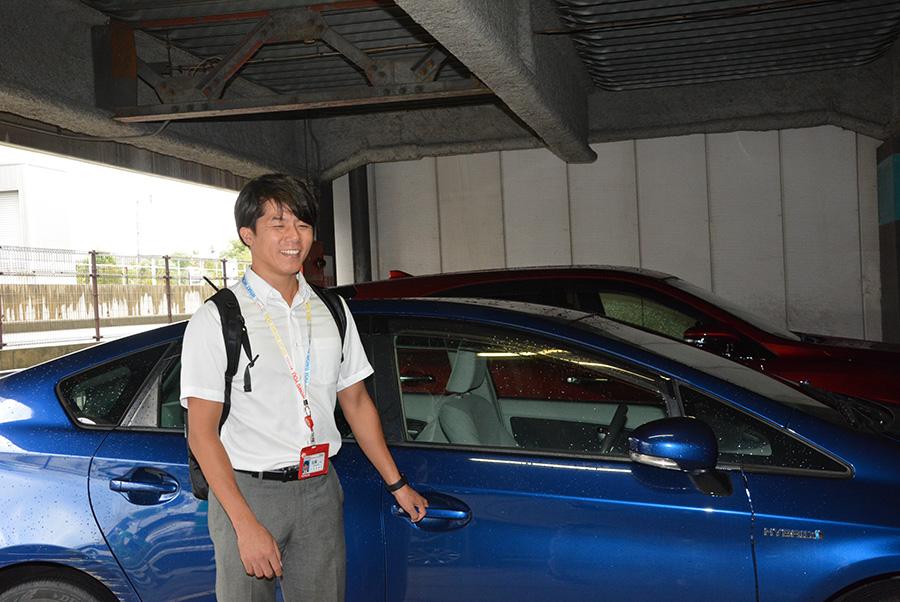
Keita Sato is one of Japan’s top Para athletes. In his third year as a university student, he participated in the Summer Paralympic Games in London 2012; shortly after he joined Toyota, he competed again in the 2016 Summer Paralympic Games in Rio de Janeiro. He didn’t leave empty-handed, winning a bronze medal and helped set a new record for Japan in the 4 x 100m relay. His personal best in the men’s 100m was also a new record for Japan: 11.77 seconds.
It’s currently mid-season for Para athletics, and Keita is returning to his day-to-day job following the end of a big competition. When he learned that part of his work today would be doing an in-depth interview with us throughout the day, he responded with an invigorating smile.
The story behind Keita’s introduction to Para sport
Keita, who hails from Shizuoka Prefecture in Japan, started playing soccer when he was a fourth-year elementary school student. Clearly an outstanding athlete, it was assumed he would continue soccer into high school and possibly beyond. It was then, in high school, that Keita was struck by a type of bone and soft tissue cancer (malignant sarcoma) called Ewing’s Sarcoma.
The cancer was discovered on the outer part of two bones joining the right knee and ankle. Keita began anti-cancer treatment immediately, where he endured the strong side effects. The cancer gradually shrunk, and an operation was set to remove it completely.
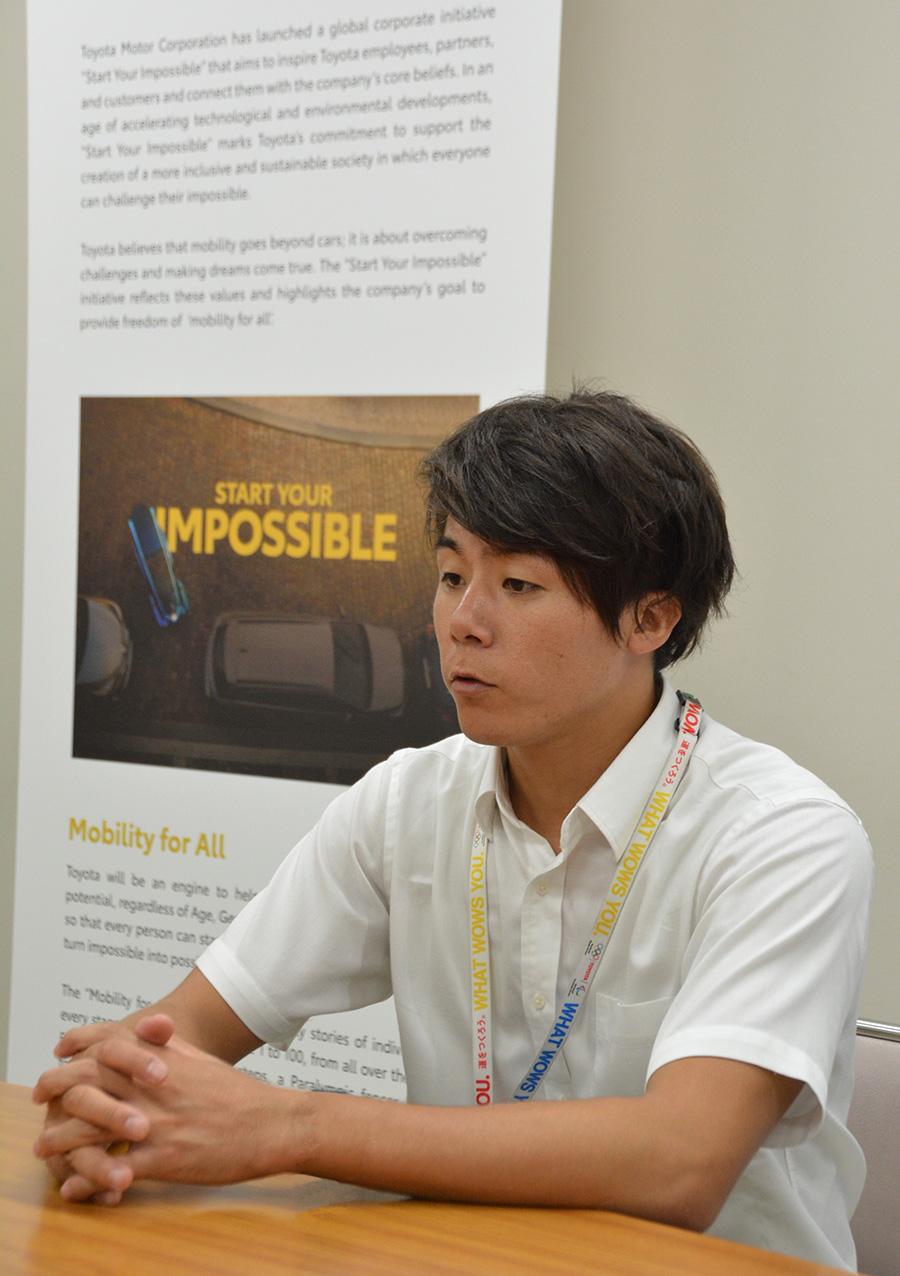
Removing the area from around only the cancerous tissue meant his leg could have been saved, but Keita himself opted for amputation. Saving his leg would have necessitated removing a large portion of his bone, making vigorous exercise difficult on account of reduced bone strength. Keita made his decision when the doctor informed him that he would be able to continue play sports with a prosthetic leg. Regarding the amputation, he says that he wasn’t overly pessimistic. Rather, he had one burning desire: “I want to continue sport.”
However, when it came down to starting life with a prosthetic leg, Keita found it hard even to stand, let alone walk. “It was beyond my imagination,” he recounts. For a while after his surgery, in addition to worries about his foot swelling, Keita’s skin weakened, and shifting his weight caused pain to reverberate in his bone. Needless to say it was a difficult time.
“There was a time when I hated my prosthetic leg,” he recalls.
Prior to surgery, he wasn’t conscious of the fact that he was an able-bodied person, so Keita felt uneasy about suddenly being treated as a person with impairments, and couldn’t accept his own impairment: “I felt like being different from others meant I couldn’t do things.”
Painstakingly hiding his prosthetic leg, Keita wore long trousers even in the height of summer. He struggled to adjust, lifting his prosthetic leg to walk. The mere existence of his prosthetic leg proved physically and emotionally hard.
Running was pure bliss
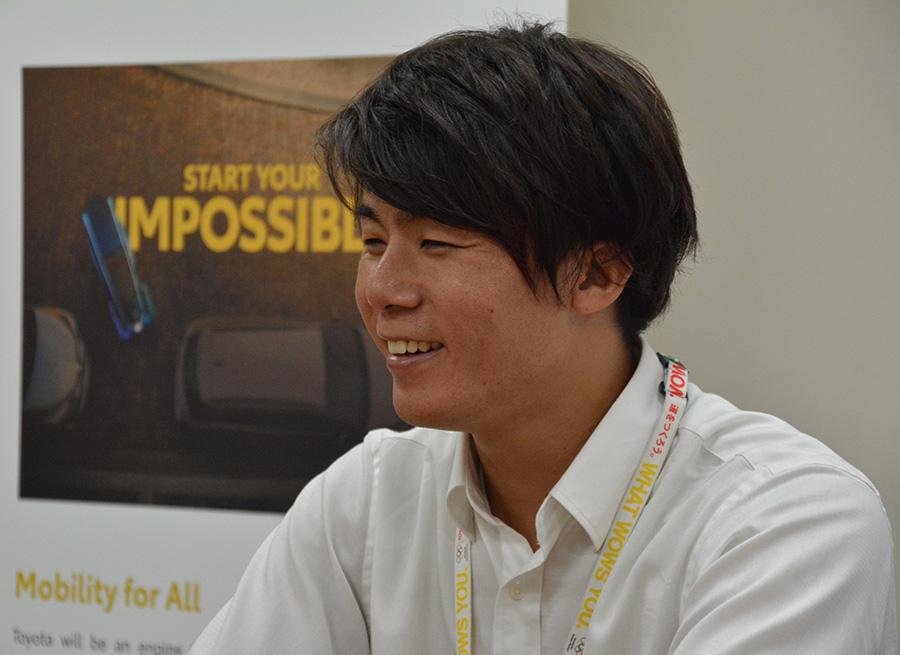
Keita started Para athletics while undergoing rehabilitation after entering high school. Running serves as the foundation of a majority of sports, after all. After half a year of hospitalization, both Keita’s physical strength and muscular strength had deteriorated significantly. It took him two whole years before he was able to run on his prosthetic leg. He wasn’t always a fast runner, but reflecting on that period, Keita reminisces: “Slicing through the wind, running was pure bliss.”
Keita feels his impairment has no effect on his friendships with members of the athletics club, and through his continuing participation, he himself continues to grow. As long as he does sport, he feels that nothing changes.
In a competition as a third-year high school student, Keita set a Japanese record for the individual 200m running event. Around that same time, he became aware of the Paralympics, and simultaneously began socializing with other Para athletes. Keita’s perspective changed further when he met Atsushi Yamamoto, the first Japanese Paralympic medalist with a prosthetic leg.
Keita recounts: “It was just so cool,” observing Atushi’s confidence, as if to say, ‘Check out my prosthetic leg!’ Thinking about living life while trying to hide his own prosthetic leg, he says: “I was finally able to ‘give up,’ in a good way. I can’t grow another leg, so I was able to come to grips with reality and overcome those thoughts.” From then on, Keita wore shorts, and walked without shame, no longer trying to hide his prosthetic leg. His performance and state of mind changed for the better.
Thoughts on society
With an eye toward the Paralympics, the high-level practice environment at Chukyo University where Keita studied was ideal, and he gradually improved his records. And, fulfilling a long-held dream, Keita was able to qualify and participate in the Summer Paralympic Games in London 2012, barely missing a medal by coming in fourth place in the 4 x 100m relay. Nevertheless, overjoyed from a dream come true, he was astonished by the event’s energy, the sheer number of spectators, and the sports-fan culture abroad.
“Japanese society isn’t familiar with impairment. For better or worse, there are occasions when society reacts oversensitively,” he comments. Perhaps because he himself is a Para athlete he notices such societal attitudes.
Keita shows us the British Athletics Association logo. Aside from able-bodied athletes, it depicts athletes who use wheelchairs and athletes with prosthetic legs. Truly, it expresses the ‘society of co-existence’ that Keita aims for. The principle abroad of no distinction toward impairment, or a more inclusive society, is inspiring.
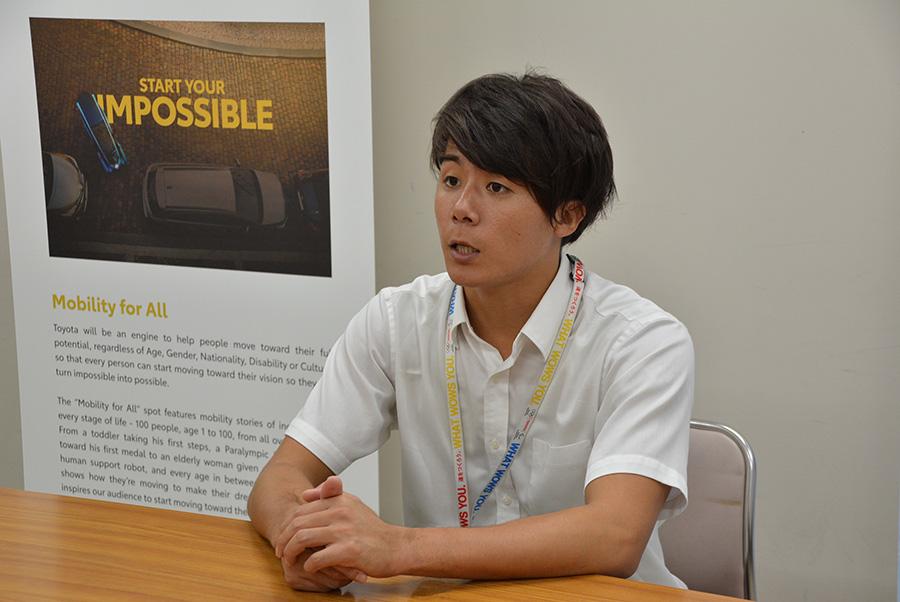
Keita himself strives to change society through the Olympic and Paralympic Games. Joining Toyota in 2017, and seeing the company become a Worldwide Partner for the International Olympic Committee and International Paralympic Committee in 2015, he believes it’s possible for Toyota to make that a reality.
At Toyota, there are 10 key values that form “Our Attitude.” When Keita first joined Toyota, he paid particular attention to those of “challenge” and “modesty and appreciation,” but now, he also recognizes the importance of “genchi genbutsu” (going to the source to get the facts). With more opportunities to interact with engineers, this idiosyncrasy of wondering about what it’s like on the frontlines has even become apparent in his competitions.
As we chat, the lunch bell chimes. Keita says he will eat with his bosses and colleagues, so we tag along.
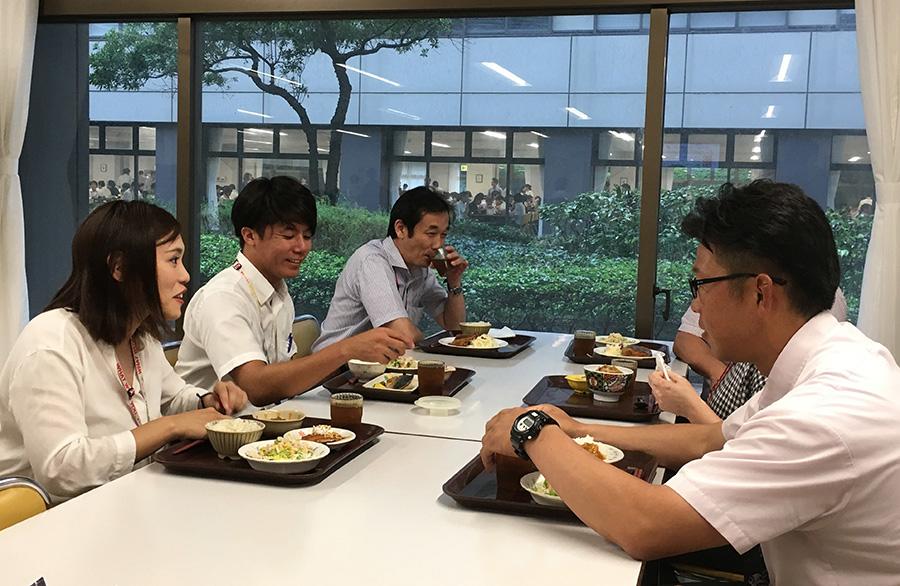
The main dish of the day was fish. Keita makes an effort to eat a balanced diet, preferring to break meals into several throughout the day, and both cooks for himself and eats out sometimes as he lives alone. On his days off, he likes to read at home or visit an onsen or hot spring; during the competition season, it soothes his tired body. In his downtime he also gives lectures and interviews. With such an active schedule, Keita says he also needs time to unwind.
Hi schedule during the season is busy: he works in the morning and trains at his alma mater, Chukyo University, in the afternoon. As the weather was not the most cooperative on the day we met, the training was mainly indoors.
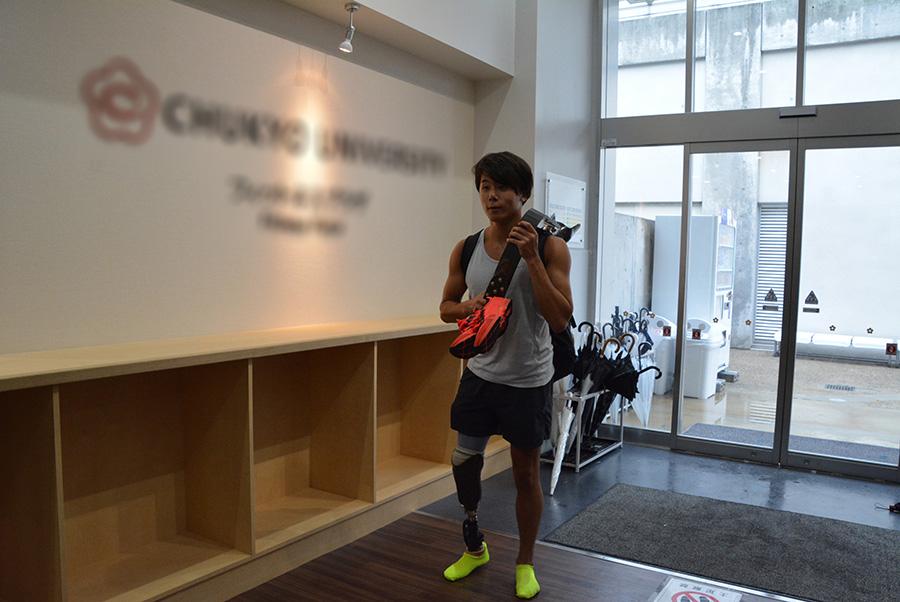
Keita’s training program included an aerobic warm-up on the bikes, followed by mat stretches and abdominal-strengthening. Next came high-level muscle training, and he put on his prosthetic leg for light exercise. Screwing it on himself, he swapped the lower part of the prosthetic leg (just above the ankle) for a sports blade.
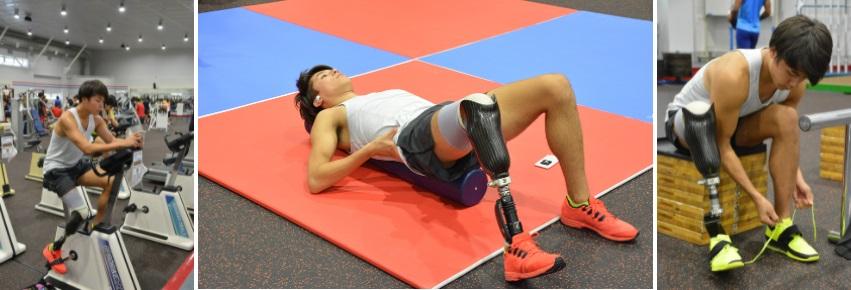
With the sun starting to peek out, we head to the athletics track to practice running. According to Keita, there’s a variety of competition prosthetic legs available for athletes, who naturally develop personal preferences. While Keita is still searching for his perfect prosthetic leg, he prioritizes having no sense of discomfort when running above all. He is on the lookout for one that will help him run faster and ‘run better,’ with full transmission of power reaching beyond the front of the foot.
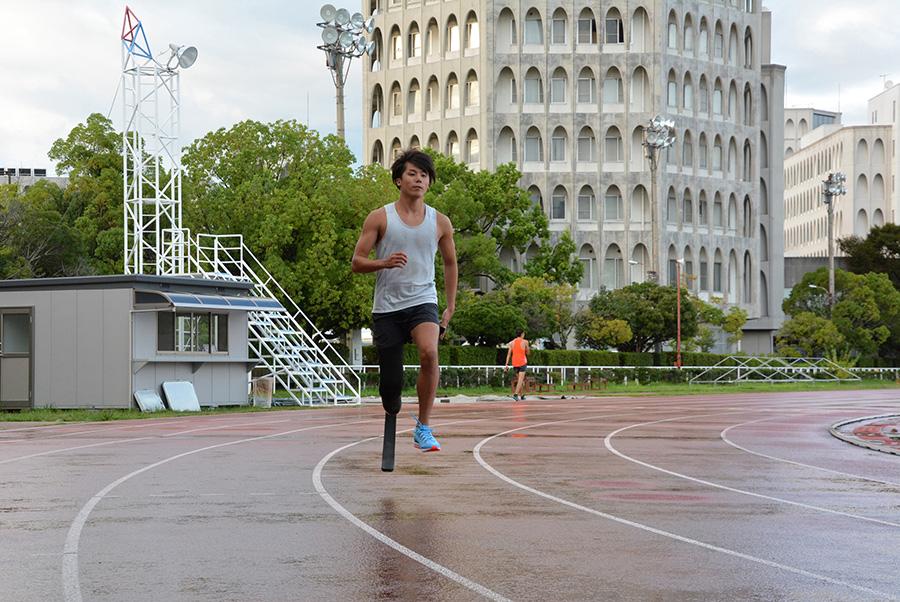
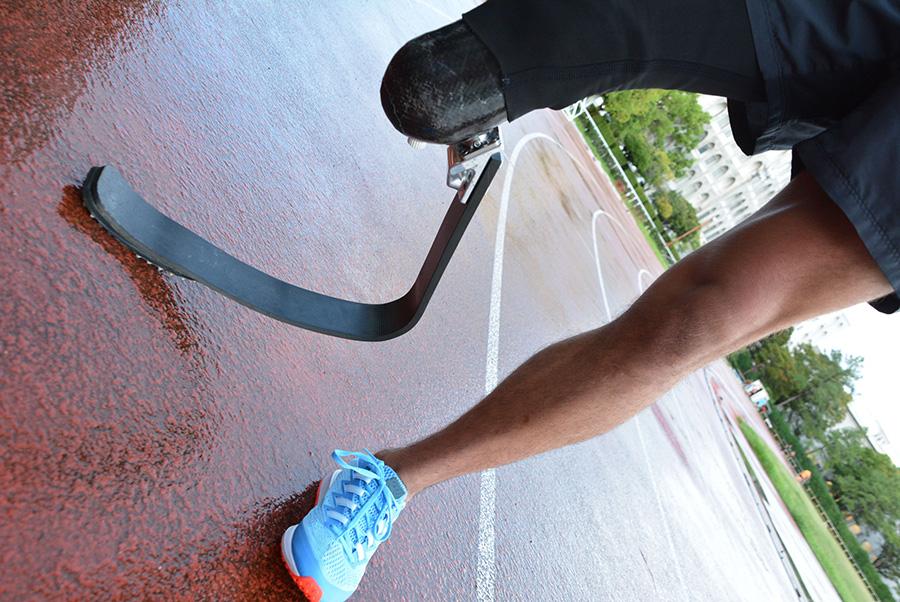
Keita typically returns home at around 9pm after training, where the sense to remove his prosthetic leg is no different from changing your clothes or removing your glasses. At home, he spends most of his time without his leg on, seeking relief from the sensation of pressure and burden when his leg is on.
Start Your Impossible
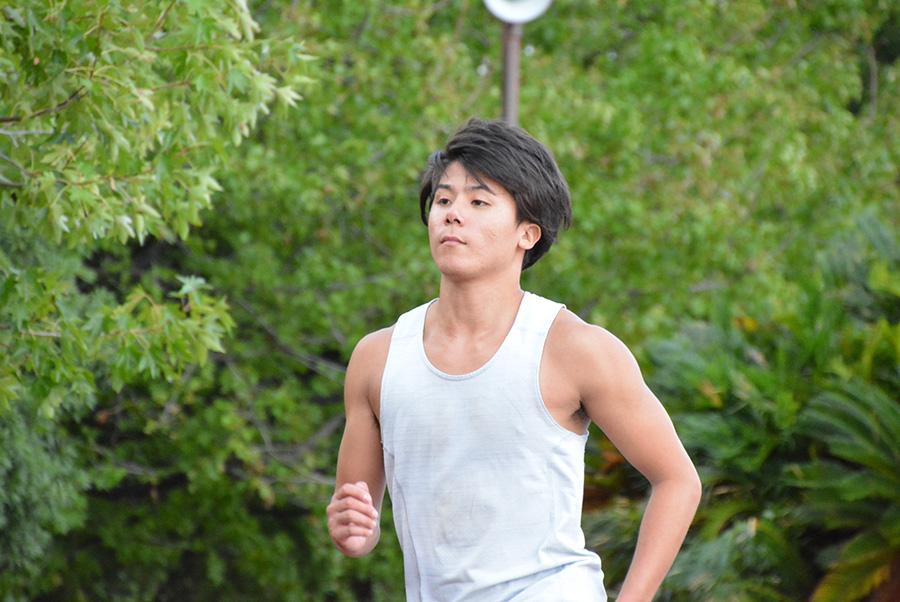
Having come to terms with being different from others and feeling out of place, Keita tells us how he faced up to himself and his prosthetic leg. While living a life that is no different from an able-bodied person, he found it questionable being referred to as a person with impairment, prompting him to ask both himself and those around him: “What really is impairment?” and “What makes people who are able-bodied and people with impairments different?” One-by-one, as individuals think about these questions honestly, Keita is actively working to create a society in which anyone can live with ease, or the ‘society of coexistence’ — a goal he is striving to realize.
It’s been 10 years since he started athletics, and Keita has grown trough sport, continuing to challenge himself, aiming ever higher. “The tough times in competitive sports often seem more frequent and long-lasting (than the good times), but you are filled with happiness in that moment you surpass your own boundaries.” These small moments of happiness are almost always connected to personal bests. “Winning and losing in this world is decided by a hundredth of a second. In terms of distance, it might only be a few mere centimeters, but to improve even that much takes years.”
Keita has always held the big goal of running 100m in 10 seconds, his version of impossible. Asked whether we can expect him to achieve this target by Tokyo 2020 Paralympic Games, , he quickly replies: “Yes!” Maybe it’s the day-in, day-out training, but he seems to brim with confidence. At that moment, I envisioned him crossing the finish line in first place, amidst his own excited cheers.
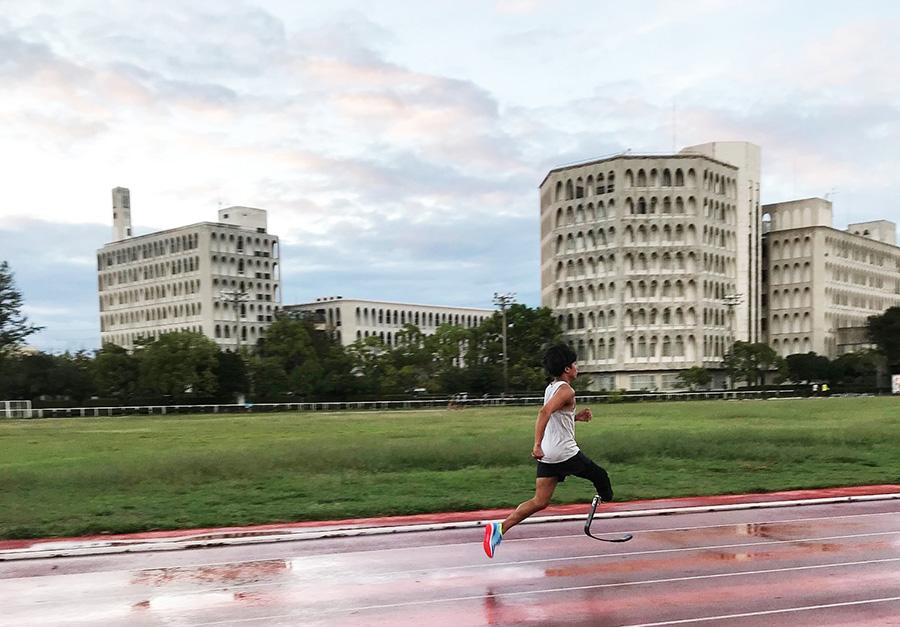
There are two years to go until Tokyo 2020 Paralympic Games. While there are younger rival athletes closing in on him, Keita is burning with a silent fighting spirit. We will continue to stand and cheer for Keita as he competes and flourishes on the global stage.
Editorial note
My impression of Keita was that he is an accomplished person who is well put together. He was sincere and relaxed in his responses, and never forgot consideration toward that which surrounds him. Perhaps it was perceived from the strength of his focus toward those strong passions he keeps deep within himself, but on the surface, he seems extremely cool, and smart. Seeing his prosthetic leg for the first time when he appeared in a tank top and shorts, he looked stylish and gallant. His meeting with Paralympian Atsushi Yamamoto seems to have truly changed him, and I felt Keita himself has and continues to inspire dreams in many other people. I am excited to follow his progress and story as we move toward Tokyo 2020 Paralympic Games.

